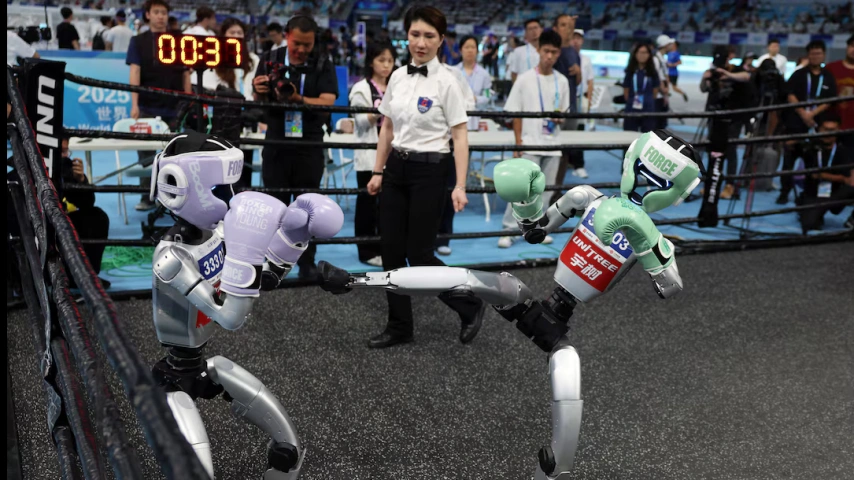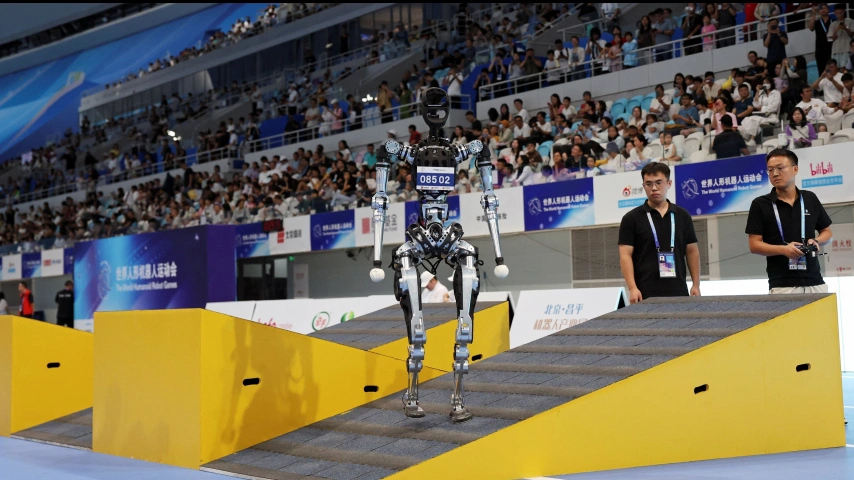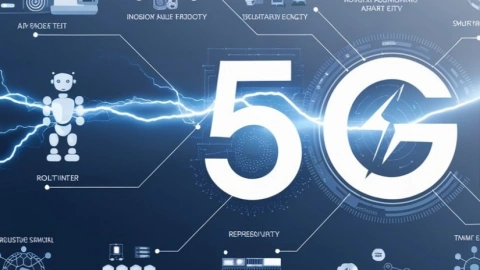Technology / Detail
Robot vs Robot: China's First-Ever Humanoid Sports Games 2025
Michael Jack | 26 August 2025 | 16:12
China is preparing to host the world’s first Humanoid Sports Games in 2025, a groundbreaking event where humanoid robots will compete in various athletic competitions.
This pioneering move signifies not just a technological leap but also a cultural shift in how robotics integrates with sports and entertainment.
Atmosphere of the Audience
The event is expected to draw massive global attention. While the inaugural edition has not yet taken place, the anticipation is building excitement among tech enthusiasts, sports fans, and industry leaders.
Audiences are predicted to experience a unique blend of sporting thrill and futuristic spectacle. Much like the Olympics, but with humanoid robots, the atmosphere is expected to be electrifying with cheers, awe, and curiosity dominating the stadium.

Although the full list of competitions has not been disclosed, reports indicate that the games will feature robot-versus-robot contests designed to test agility, endurance, and intelligence in a wide variety of situations. Possible events include:
- 100-meter sprint (testing speed and mobility on a straight track)
- Soccer matches (team coordination, passing strategies, and agility in dynamic play)
- Basketball shooting contests (precision, control, and the ability to adjust to different ranges)
- Weightlifting challenges (strength demonstration under varying conditions and stability tests)
- Martial arts simulations (reflexes, programmed combat skills, and adaptive defense mechanisms)
- Obstacle courses (combining speed, problem-solving, and sensor accuracy)
- Relay races (team-based speed combined with handoff synchronization)
By including diverse competitions that push different capabilities, organizers aim to reveal how far humanoid robots have come in mimicking and even surpassing human performance.
The breadth of categories further ensures that every aspect of robot design—from balance and motion control to decision-making under pressure—will be tested, offering audiences an unparalleled view of technological progress.
Teams and Developers
Each team will consist of humanoid robots created by top robotics companies, universities, and research institutions. While the official lineup has not been confirmed, some expected participants include:
- UBTECH Robotics (China) – known for its humanoid robots like Walker.
- Boston Dynamics (USA) – globally renowned for its advanced bipedal robots like Atlas.
- Tesla Optimus team (USA) – pushing innovation with AI-integrated humanoids.
- Engineered Arts (UK) – creators of Ameca, the expressive humanoid.
- Hanson Robotics (Hong Kong) – famous for Sophia the robot.
Emerging startups, particularly from South Korea, Germany, and Singapore, are rumored to join as well, ensuring that fresh innovation and unconventional designs enter the spotlight.
This blend of established leaders and bold newcomers promises a wide diversity of humanoid capabilities and styles, ranging from agility-focused designs to AI-driven decision-making specialists.
These developers bring global prestige and credibility to the event, making it not just an entertainment showcase but also a platform for technological rivalry, cross-cultural collaboration, and a vivid demonstration of how the robotics ecosystem—from academia to industry—converges on the world stage.
Rewards and Prizes
While prize details are still under wraps, it is expected that the winners of each category (1st, 2nd, and 3rd place) will receive:
- Gold, Silver, and Bronze medals (symbolic, similar to the Olympics)
- Research funding and sponsorship deals for the winning developers
- Exclusive partnerships with governments and industries interested in adopting robotics technology
- Potential commercialization opportunities for mass deployment of the winning robots
Audience and Post-Event Feedback
Spectators are expected to be both thrilled and critical. Tech enthusiasts may praise the engineering marvels, while others might raise ethical questions about the future of robots in society. Anticipated feedback will likely touch on:
- Improvements in realism and performance of humanoids
- Concerns about job replacement and AI dominance
- Excitement for future commercial applications in sports, healthcare, and industry
Long-Term Impact
The Humanoid Sports Games are more than just a competition – they mark the beginning of a new industry. Long-term impacts include:
- Acceleration of Robotics Development – pushing companies to innovate faster.
- Global Robotics Race – intensifying competition between the US, China, Japan, and Europe.
- New Entertainment Industry – creating a future where humanoid robot sports may rival traditional athletics.
- Practical Applications – improvements in humanoid capabilities will likely spill over into healthcare, elderly care, manufacturing, and even space exploration.
It represents a convergence of cutting-edge robotics, artificial intelligence, and cultural fascination with sports. With leading developers participating, thrilling competitions on the horizon, and significant long-term impact, this event could shape the next era of sports, technology, and society itself.
Beyond the competitions, the Games symbolize humanity’s willingness to embrace robots not merely as tools but as performers and rivals in arenas once thought exclusive to humans.
It will encourage new research, spark ethical debates, and inspire the next generation of engineers, athletes, and spectators to imagine a future where humans and machines coexist, collaborate, and even compete on equal footing.
Related
-

Edge AI & 5G-Advanced: Shaping the Future of Connectivity
Technology25 August 2025
-

Indonesia’s Crypto Leap: What the World Can Learn from CFX and COIN
Technology19 August 2025
-

The Rise of Micro-SaaS: How Small Tools Are Solving Big Problems
Technology02 August 2025
-

The Best All-in-One Productivity Apps in 2025 (That Aren’t Overkill)
Technology02 August 2025
-

Legit Crypto Platforms to Watch in 2025: Where Safety Meets Utility
Technology01 August 2025
-

Freelancer Tech Stack 2025: The Tools Solopreneurs Actually Use
Technology01 August 2025
Editor's Pick
-

-

Can AI Predict Market Crashes? What We Know (and Don’t)
03 August 2025 -

-

-
